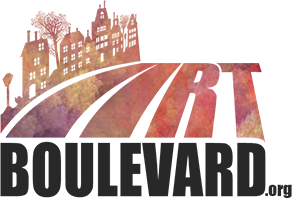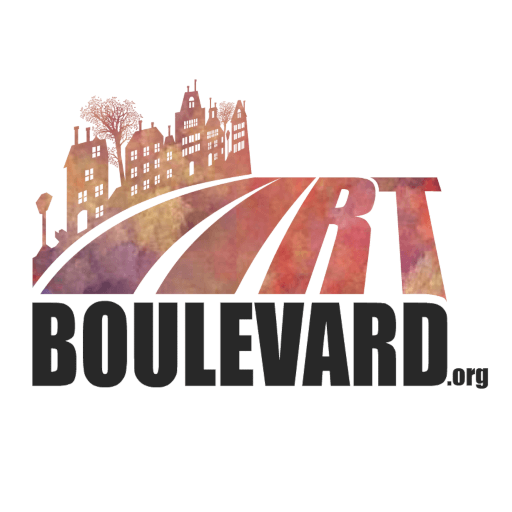Javascript must be enabled to continue!
Loaded objects: addressing gun violence through art in the gallery and beyond
View through CrossRef
AbstractGun violence impacts our experience of public spaces, including how we represent and memorialize tragic events stemming from guns in public ways. Immediate memorials, complete with flowers and other ephemera, frequently appear at the sites of gun violence, at times to be followed by permanent memorials with contemplative spaces and names of victims etched in stone. While communicating loss and grief, both of these strategies usually evade any real political action or consideration of the complexities of gun violence or its causes. Mirroring the stalemate in our political dialogue around guns and their proliferation, our dominant strategies of memorialization similarly offer little more than “thoughts and prayers”. In what ways can contemporary art break through these evasions and even prompt dialogue or change around the complex array of issues that arise with the increased presence of guns in American society? How can art generate experiences for viewers that allow for a more complex consideration of gun-related violence than the cycle of grief seen in immediate and permanent memorials? In this paper, I survey works of art that produce possibilities for transformative conversation around the issue by considering guns as what Bruno Latour calls “actants”. I begin by examining guns in the gallery, first offering a new readings of Chris Burden’s Shoot (1971) and Marina Abramović’s Rhythm 0 (1974), both of which notoriously included real firearms, and then turning to sculptural projects that literally disarm guns, rendering them deliberately strange and prompting complex conversations about their material presence in American life. I then shift focus towards the public sphere to consider works by Krzysztof Wodiczko, Jenny Holzer, and Michael Rakowitz, artists who rewire established circuits of monumental commemoration, public space advertising, and vernacular immediate memorials to generate a sense of distance, and even a safe space for dialogue in the public realm.
Title: Loaded objects: addressing gun violence through art in the gallery and beyond
Description:
AbstractGun violence impacts our experience of public spaces, including how we represent and memorialize tragic events stemming from guns in public ways.
Immediate memorials, complete with flowers and other ephemera, frequently appear at the sites of gun violence, at times to be followed by permanent memorials with contemplative spaces and names of victims etched in stone.
While communicating loss and grief, both of these strategies usually evade any real political action or consideration of the complexities of gun violence or its causes.
Mirroring the stalemate in our political dialogue around guns and their proliferation, our dominant strategies of memorialization similarly offer little more than “thoughts and prayers”.
In what ways can contemporary art break through these evasions and even prompt dialogue or change around the complex array of issues that arise with the increased presence of guns in American society? How can art generate experiences for viewers that allow for a more complex consideration of gun-related violence than the cycle of grief seen in immediate and permanent memorials? In this paper, I survey works of art that produce possibilities for transformative conversation around the issue by considering guns as what Bruno Latour calls “actants”.
I begin by examining guns in the gallery, first offering a new readings of Chris Burden’s Shoot (1971) and Marina Abramović’s Rhythm 0 (1974), both of which notoriously included real firearms, and then turning to sculptural projects that literally disarm guns, rendering them deliberately strange and prompting complex conversations about their material presence in American life.
I then shift focus towards the public sphere to consider works by Krzysztof Wodiczko, Jenny Holzer, and Michael Rakowitz, artists who rewire established circuits of monumental commemoration, public space advertising, and vernacular immediate memorials to generate a sense of distance, and even a safe space for dialogue in the public realm.
Related Results
Speaking of trauma: the race talk, the gun violence talk, and the racialization of gun trauma
Speaking of trauma: the race talk, the gun violence talk, and the racialization of gun trauma
AbstractThis paper considers the intersection of race and gun violence through the lens of trauma. We focus on two high-profile cases of gun violence: the state-deemed justifiable ...
Targeted advertising: documenting the emergence of Gun Culture 2.0 in Guns magazine, 1955–2019
Targeted advertising: documenting the emergence of Gun Culture 2.0 in Guns magazine, 1955–2019
AbstractThis study replicates Yamane, Ivory, and Yamane’s (Gun studies: interdisciplinary approaches to politics, policy, and practice, Routledge, New York, pp. 9–27, 2019) earlier...
School Shootings, Protests, and the Gun Culture in the United States
School Shootings, Protests, and the Gun Culture in the United States
AbstractScholars document that attitudes toward guns and gun policy reflect deeply entrenched cultures that overlap with ideological affiliations and party politics. Does exposure ...
Witnessing Interparental Violence and Acceptance of Dating Violence as Predictors for Teen Dating Violence Victimization
Witnessing Interparental Violence and Acceptance of Dating Violence as Predictors for Teen Dating Violence Victimization
We examined the association between witnessing interparental violence, attitudes about dating violence, and physical and psychological teen dating violence (TDV) victimization. Par...
Exploring Variations Within Situational Couple Violence and Comparisons With Coercive Controlling Violence and No Violence/No Control
Exploring Variations Within Situational Couple Violence and Comparisons With Coercive Controlling Violence and No Violence/No Control
We examined variations within situational couple violence among 23 divorcing mothers and compared them with mothers with coercive controlling violence and no violence/no control. S...
Unpacking the Suitcase: German-Jewish Refugees in New Zealand and the Afterlives of their Displaced Objects 1933-2015
Unpacking the Suitcase: German-Jewish Refugees in New Zealand and the Afterlives of their Displaced Objects 1933-2015
<p>When German-Jewish refugees arrived in New Zealand in the 1930s fleeing Hitler’s Europe, they brought with them everything they could from their former homes: furniture, l...
Calvin’s Problem: Racial Identity and Gun Ownership
Calvin’s Problem: Racial Identity and Gun Ownership
Calvin Mitchell is a gun-loving conservative black man who hates when people “play the race card.” And yet as he tries to participate in the gun world, he is constantly confronted ...
A holistic approach to violence: Women parliamentarians’ understanding of violence against women and violence in the Kurdish issue in Turkey
A holistic approach to violence: Women parliamentarians’ understanding of violence against women and violence in the Kurdish issue in Turkey
While women in Turkey and around the world are commonly engaged in civic activism for peace and violence reduction, they are seriously underrepresented in formal politics; thus, no...










 Your session has timed out for security reasons.
Your session has timed out for security reasons.